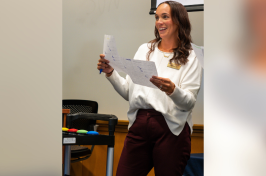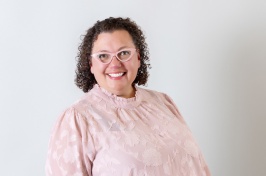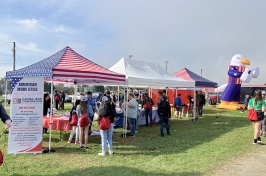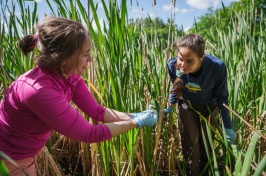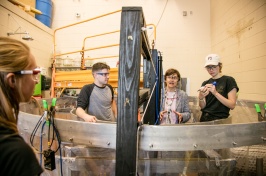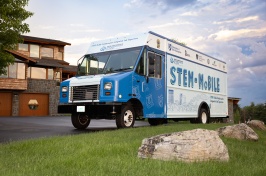Carsey School of Public Policy at UNH: First Child Poverty Decline Since Before 2007 Driven by Urban America
DURHAM, N.H. - Child poverty rates fell slightly across the country in 2013 for the first time since before the beginning of the Great Recession, according to new research from the Carsey School of Public Policy at the University of New Hampshire.
According to the 2013 American Community Survey released Thursday (Sept. 18, 2014) by the U.S. Census, 22.2 percent of children were poor in 2013, down from 22.6 percent in 2012. This change was driven largely by a decline in child poverty rates in urban America, even while some states saw significant growth in child poverty.
Child poverty declined significantly in 10 states: Alaska, Colorado, Florida, Hawaii, Maine, Michigan, New Hampshire, Ohio, Texas, and Wyoming. In contrast, it increased in three states: New Jersey, New Mexico, and West Virginia. While New Hampshire saw a significant increase in 2012, it returned to the bottom of the rankings in 2013, tied statistically with North Dakota.
Today an estimated 16.1 million children live in poverty; 6 million of them are under age six. In 2007, before the toll of the Great Recession, 13.1 million children (18 percent) were living in poverty nationally.
"These new estimates suggest that child poverty may be declining in the aftermath of the Great Recession, however not all saw these declines. Variations by child age and race-ethnicity raise concerns about America's most vulnerable children," the researchers said.
"In this context, it is imperative to consider the role of the safety net in protecting America's most vulnerable populations. Programs like the Earned Income Tax Credit, the Supplemental Nutrition Assistance Program, and Temporary Assistance to Needy Families provide critical support for poor children."
The research was conducted by Beth Mattingly, director of research on vulnerable families at the Carsey School and research assistant professor of sociology at UNH; Jessica Carson, vulnerable families research scientist at the Carsey School; and Andrew Schaefer, a doctoral student in sociology and a vulnerable families research associate at the Carsey School.
In 2013, child poverty remained highest among blacks (39.1 percent) and Hispanics (32.8 percent). Poverty fell for all racial-ethnic groups except among non-Hispanic whites. Rates remain highest in urban (29.1 percent) and rural (26.2 percent) America. Suburban poverty (17.2 percent) is lowest but more poor children reside in the suburbs than in urban or rural places.
This analysis is based on estimates from the 2007, 2009, 2012, and 2013 American Community Survey. Child poverty is measured as the share of children under age 18 who live in families with incomes below the federal poverty level. The federal poverty definition consists of a series of thresholds based on family size and composition. In 2013, the poverty line for a family of four (two adults, two children) was $23,624.
The complete Carsey report about this research is available at http://scholars.unh.edu/carsey/221.
The Carsey School of Public Policy at the University of New Hampshire is a nationally acclaimed resource for research, leadership development, and engaged scholarship relevant to public policy. We address the most pressing challenges of the twenty-first century, striving for innovative, responsive, and equitable solutions at all levels of government and in the for-profit and nonprofit sectors. For more information about Carsey, go to www.carsey.unh.edu.
The University of New Hampshire, founded in 1866, is a world-class public research university with the feel of a New England liberal arts college. A land, sea, and space-grant university, UNH is the state's flagship public institution, enrolling 12,200 undergraduate and 2,300 graduate students.
Beth Mattingly can be reached at beth.mattingly@unh.edu and 240-593-4297. Jessica Carson can be reached at jessica.carson@unh.edu and 603-219-3321. UNH Media Relations has an on-site ReadyCam broadcast studio available through VideoLink (617-340-4300) for television interviews and an ISDN line for radio interviews
Latest News
-
October 30, 2024
-
October 10, 2024
-
October 8, 2024
-
October 3, 2024
-
October 1, 2024








